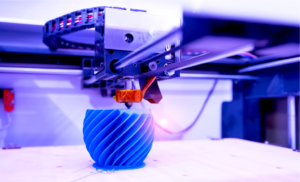Professional extensions can give you thick, luscious locks in a matter of hours. And when applied and cared for correctly, they cause minimal damage to your natural hair.
Choose from a variety of application methods like clip-ins, tape-ins, micro-link extensions and weaves. You can also add highlights, lowlights or bold pops of color. Contact Hair Extensions San Francisco now!

Hair extensions can help you overcome your insecurities and transform your look. Whether you’re looking to add volume or length or experiment with a new color, the versatility of hair extensions can help you achieve your ideal look.
When paired with a healthy scalp, extensions can also protect your natural locks. Unlike some hair treatments, which can cause damage, extensions are relatively safe for your natural hair and can be worn continuously, if properly cared for. This means less exposure to heat styling tools and more time for your tresses to rest, which promotes overall health and vitality.
For those who struggle with thin, fine, or damaged strands, hair extensions can be a game-changer. Adding length and fullness to your strands can give them a lush and luxurious appearance. This can also give you a confidence boost by masking imperfections, such as thinning spots or a receding hairline.
Many women are insecure about their natural texture, and it can be a challenge to change up your style without risking your strands. With the versatility of hair extensions, you can easily experiment with different textures, such as cascading waves or voluminous curls.
This can be a powerful tool for self-expression and self-confidence, especially when paired with a serum like FullyVital. This can help strengthen your natural strands while reducing the occurrence of split ends, allowing you to continue to wear your hair extensions longer.
Even for those who have thick, luscious locks, it’s not uncommon to feel insecure about their strands. This is particularly common among those who have naturally fine or thinning strands, especially as they age, or after years of damaging their strands with aggressive styling and bleach jobs. Hair extensions can give you that extra boost of confidence by hiding these insecurities and helping you achieve the look you’ve always wanted. In the end, it’s all about feeling good in your own skin and embracing the confidence that comes with having a beautiful mane. If you are unsure about how to make the best choice for your hair type, consult with a professional stylist before making a purchase. They can guide you to the perfect product and service to suit your unique needs and preferences.
Add Length
Whether you have thin hair that you’re looking to bulk up, short hair that you want to lengthen, or are simply in the mood for a quick switch-up, hair extensions offer a safe, cost-effective solution. While there is a lot of misinformation regarding hair extensions (for example, that they will damage your natural hair), the reality is that when applied by a professional and cared for properly, they are an extremely low-risk option.
While it may seem tempting to go from a bob to waist-length hair overnight, it is generally best to add your extensions in stages for a more seamless transition. You’ll also need to consider your natural hair thickness and texture, as well as the color of your hair. It is typically best to use natural-looking colors that will blend with your existing tresses, and to stick to lighter shades for longer hair.
It’s also important to determine the correct length for your hair extensions based on the look you’re going for. Generally, extensions that are closer to your natural hair length are more undetectable and easier to style. For example, if you have fine hair, it is often recommended that you opt for extensions that are around 14 inches long, so as not to weigh down the hair and overwhelm your natural tresses.
Achieving a great look with hair extensions depends on blending your natural hair with the extension in a way that is undetectable and seamless. This is a big reason why it’s important to work with an expert who understands the various methods and lengths of extensions. It’s also why it’s a good idea to get a consultation prior to having your extensions applied, so that you can have an accurate understanding of what the final results will look like and how they will be placed.
Regular salon visits are also crucial to maintaining your hair extensions. A hairdressing professional can ensure that your extensions are secure and can make adjustments if necessary, as well as provide advice on how to care for them properly. For example, brushing your hair with a soft-bristle brush or loop brush designed specifically for hair extensions will prevent matting and tangling. And at night, putting your hair up in a loose plait will help to protect it from getting tangled or matted while you sleep.
Add Volume
Hair Extensions are a great solution to add volume to thin or flat hair. No matter your hair type, hair extensions are available in a variety of different colors and lengths to suit every hair style. The key to creating a seamless volume boost is to ensure that the extensions are properly color-matched and placed close enough to the scalp for a natural look. A thorough consultation with a specialist is essential to ensure that your new hairstyle will be comfortable and natural.
Thin or fine hair can often be hard to style, as it can be difficult to achieve full-bodied ponytails and voluminous curls without a significant amount of extra volume. Hair extensions can provide an easy way to achieve these styles and add a much-needed confidence boost to those who are self-conscious about their thin or fine hair.
One of the best parts about having hair extensions is that they can help you experiment with your look without a long-term commitment or damage. With the right extension method, you can add highlights and lowlights to your hair, or even change your whole color – all while staying safe and protecting your own naturally beautiful hair.
Adding color to your hair extensions is a fun way to transform your look and show off your personality. When it comes to caring for your hair extensions, it is important to use sulfate-free shampoos and conditioners to avoid dryness and buildup. It is also important to brush your hair regularly, particularly before you go to sleep, to prevent matting and tangling.
Hair extensions are the ideal solution for those looking to add color or highlights to their hair, but are afraid of damaging their natural locks. A professional stylist will be able to match your new hair color seamlessly to your existing tones and create a natural-looking result.
There are many different types of hair extensions on the market, but it’s important to choose a quality product that matches your natural color and texture well. For example, tape-in extensions are perfect for thin or fine hair because they lay flat against your head and won’t weigh down your natural strands. Clip-in extensions are another great option for those who want a quick and simple way to add volume, while hand-tied or sew-in extensions are the best choice for those who want a more permanent solution.
Add Color
Hair extensions can add a pop of color to your locks without the wait that it takes to grow out natural hair. They can be dyed to create the look you desire, allowing you to transform your hairstyle in a matter of hours or even minutes! Whether you are looking to achieve long, luscious locks or voluminous, full-bodied strands, there is a hair extension option for every style.
Hair Extensions are made of natural, reusable materials that allow you to play with color and add highlights and lowlights to your hair without damaging it. You can use tape extensions to add streaks of color and blend them with your natural hair or you can try a more permanent method such as sew-ins, weaves, or bonded extensions. The process of adding extensions will vary according to the type of extension you choose, with clip-ins and halo extensions taking the least amount of time to install. Tape, wefts, and bonded extensions will take longer, with a professional salon session lasting up to an hour or more.
Adding highlights to your hair extensions is one of the most popular uses for them, but they can be used to give you darker shades as well. Before you decide to dye your extensions, it is important to consult the manufacturer’s instructions on proper dyeing techniques. Most brands recommend starting with a lighter base than your desired color and applying the dye in small sections to ensure that each strand is properly saturated.
Once your extensions are dry, it is recommended that you rinse them thoroughly using a mild, sulfate-free shampoo or hair treatment. This will remove any excess dye and will also keep your extensions moisturized to prevent them from becoming dull or tangled after coloring. A moisturizing treatment can help you revive your extensions and return them to their healthy, vibrant state.





